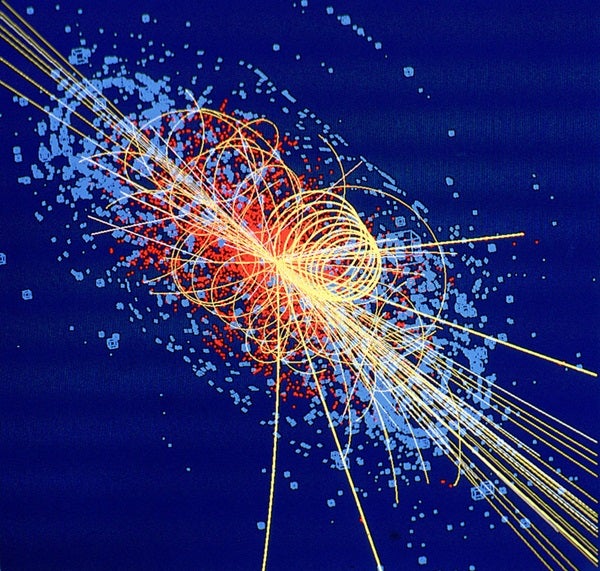The laws of particle physics do not appear to work without the Higgs boson, and it is the sole remaining piece of these fundamental rules still missing. Teams of scientists at particle colliders in the United States (at Fermi National Accelerator Laboratory in Batavia, Illinois) and in Europe (at the European Organization for Nuclear Research [CERN] in Geneva, Switzerland) are searching for the particle. From studies carried out at these, and earlier, particle detectors, we know that the Higgs boson must be heavier than 114 billion electronvolts (GeV) (a proton has a mass of approximately 1 GeV), but lighter than 1,000 GeV, and not between 158 and 173 GeV. In December 2011, scientists with two CERN experiments announced that the Higgs is likely between 115 and 130 GeV.
The Higgs boson is the only particle that has an intrinsic angular momentum (or “spin”) of 0 — all other observed particles have an intrinsic angular momentum of ½ or 1. This leads to unusual behavior of the Higgs in its quantum world. The properties of the particle are so strange that scientists believe there may be new properties of nature, perhaps even new dimensions of space, that are necessary to fully describe the Higgs. The same colliders searching for the particle may soon reveal these properties. So the Higgs boson could signal the closing of one chapter and the opening of a new, more exciting one in physics. — Patrick Fox and Adam Martin, Fermi National Accelerator Laboratory, Batavia, Illinois










